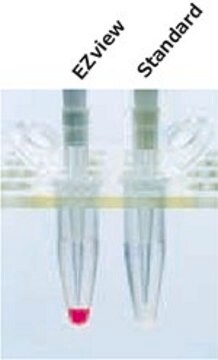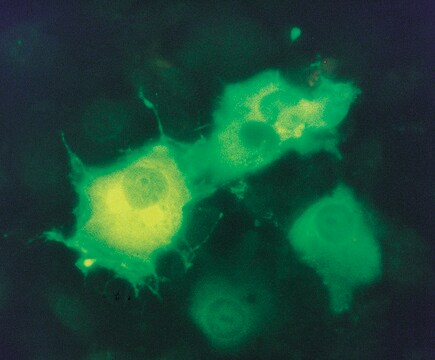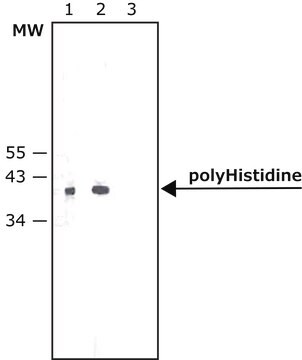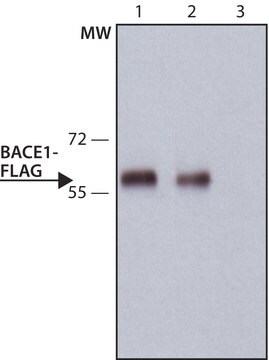P2983
ANTI-FLAG® M2 monoclonal antibody produced in mouse
96-well, clear, polystyrene, flat bottom plate
Sinónimos:
Anti-ddddk, Anti-dykddddk
About This Item
Productos recomendados
antibody product type
primary antibodies
Quality Level
material
polystyrene
clone
monoclonal
shelf life
Unopened plates are stable for 2 years. Once opened they are stable for 2 weeks.
technique(s)
ELISA: suitable
isotype
IgG1
capacity
100-300 ng/well
storage temp.
2-8°C
¿Está buscando productos similares? Visita Guía de comparación de productos
General description
Application
Learn more product details in our FLAG® application portal.
Storage and Stability
Other Notes
The plate is supplied as a 96-well microtiter plate with clear sides and bottom.
Coating:
ANTI-FLAG® M2 mouse monoclonal antibody, IgG1, is coated at a reaction volume of 200 ml/well.
Blocking:
The wells are pre-blocked for convenience at 275 to 300 ml/well with a complex solution containing bovine serum albumin.
Specificity:
The plates are specific for the FLAG epitope regardless of its placement in the fusion protein: amino-terminal, Met-amino terminal, carboxy terminal or internal. Binding of the epitope is not Ca2+ dependent.
Sensitivity:
Detection of 1 ng/well of a control fusion protein was observed in an ELISA format with p-Nitrophenyl Phosphate (pNPP) as a substrate.
Capacity:
Capture of 100 to 300 ng/well of a FLAG fusion protein has been demonstrated.
Legal Information
¿No encuentra el producto adecuado?
Pruebe nuestro Herramienta de selección de productos.
Related product
Certificados de análisis (COA)
Busque Certificados de análisis (COA) introduciendo el número de lote del producto. Los números de lote se encuentran en la etiqueta del producto después de las palabras «Lot» o «Batch»
¿Ya tiene este producto?
Encuentre la documentación para los productos que ha comprado recientemente en la Biblioteca de documentos.
Los clientes también vieron
Contenido relacionado
Protein purification techniques, reagents, and protocols for purifying recombinant proteins using methods including, ion-exchange, size-exclusion, and protein affinity chromatography.
Protein expression technologies for expressing recombinant proteins in E. coli, insect, yeast, and mammalian expression systems for fundamental research and the support of therapeutics and vaccine production.
Nuestro equipo de científicos tiene experiencia en todas las áreas de investigación: Ciencias de la vida, Ciencia de los materiales, Síntesis química, Cromatografía, Analítica y muchas otras.
Póngase en contacto con el Servicio técnico











